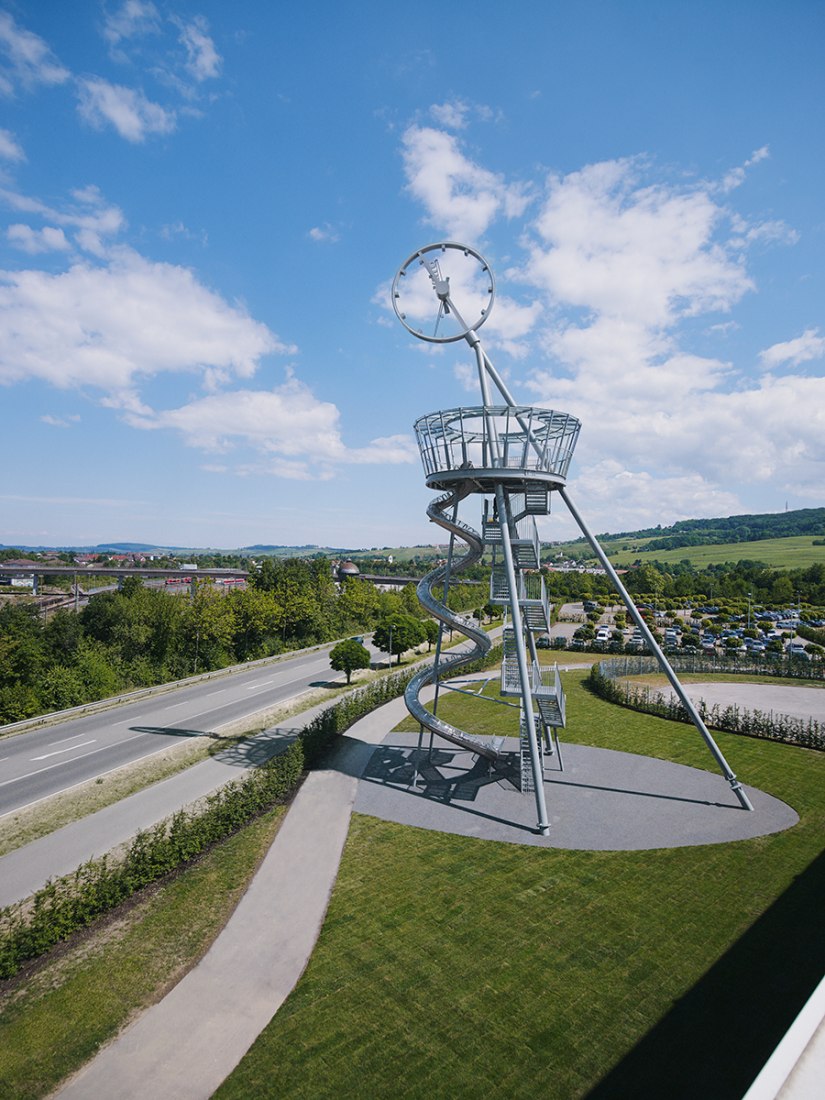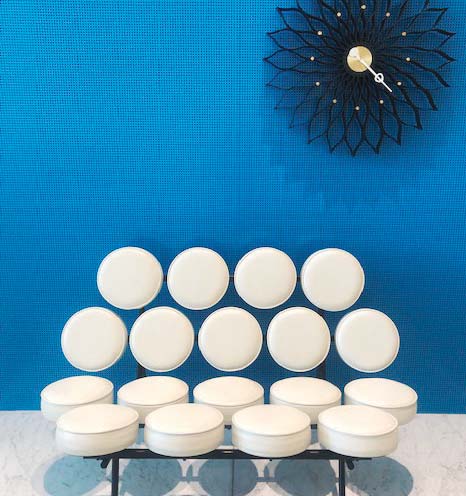If you subscribe to the Charles and Ray Eames school of thought that pleasure may (and should) be found in the melding of art and architecture, the uncommon beauty of common things and devilishly delicious details, then perhaps it is time to plan a pilgrimage to the architectural park that is the Vitra Campus in the German town of Weil am Rhein
(Nov 18): The tiny German town of Weil am Rhein has long been a magnet for those with an eye for detail, a penchant for striking lines and clever curves, and a lifelong pursuit of making everyday living extraordinary. At first impression, it pales in comparison to the offerings of nearby Swiss city Basel, but this small town on the east bank of the River Rhine is a veritable architectural mecca, primarily because it is the site of the Vitra Campus, a design wonderland that takes visitors on a magical storybook journey, told through a thousand and one tales of iconic design, the collective structures of world-famous star-chitects and, in the words of Charles Eames himself, a colossal coming together of “the uncommon beauty of common things”.
It is a unique assembly of contemporary architecture grouped on a part-exhibition, part-working 25,000ha site that is the masterpiece of the Fehlbaum family, who founded furniture company Vitra in 1953. Although the company is itself headquartered in Birsfelden, Switzerland, the facilities in Weil am Rhein form part of the production and distribution backbone. It was only after a disastrous fire in 1981 that the seed that would later transform the site into a living showcase for design and architecture enthusiasts was first sown. Beginning with British architect Nicholas Grimshaw, other world-famous talents ranging from Frank Gehry to Zaha Hadid soon made their way here to create stunning new structures that would help transform Weil am Rhein into a mecca for design and architecture enthusiasts. If you have yet to visit, here are some of our must-dos while there.
Vitra Showroom
315 Outram Road #14-08
Tan Boon Liat Building, Singapore 169074
Tel: +65 6270 8828
UPS + DOWNS
Reminding us that design can and should go beyond mere utilitarianism, German artist Carsten Höller’s 30m Slide Tower treats you to breathtaking views of the surrounding countryside before inviting you to embark on a thrilling ride down the 38m corkscrew-shaped tube slide. Be prepared to squeal (or shriek) with delight all the way down!
HOT STUFF
The first stop on most people’s lists is undoubtedly Dame Zaha Hadid’s Fire Station. Completed in 1993, it is an awe-inspiring piece of highly angular architecture. Many visitors invariably ask: Why a fire station? The answer lies in the devastating fire of the early 1980s, after which Vitra decided an on-site fire brigade was necessary. Although the fire-fighting team was disbanded not long after, the spirit behind it is immortalised in Hadid’s strong and visually-striking architectural sculpture — her first to be built and completed, in fact.
SIGHT FOR SORE EYES
Currently showing at the Vitra Design Museum is Objects of Desire: Surrealism and Design 1924 — Today, featuring works by René Magritte, Man Ray, Iris van Herpen and Salvador Dali. The pièce de résistance, however, is the very structure itself, a stunning architectural collage of towers, ramps and cubes designed by none other than the great Frank Gehry in 1989. It is his first work in Europe. The exhibition, which opened on Sept 27, will run until Jan 2019.
YEN FOR ZEN
Allow some time for repose in the peaceful calmness of Tadao Ando’s Conference Pavilion. Another first for Vitra, it is Ando’s maiden building outside of his home country. Part of the appeal of this pavilion lies in the approach, along a footpath that evokes the meditation trails of Japanese monasteries and Zen gardens. If your schedule permits, visit in springtime, complete with a hanami picnic, when the surrounding cherry trees are in full bloom, proffering a further paean to the preeminent Japanese architect.
RING MY BELL
German sculptor Tobias Rehberger’s Bell waymarkers mark both the start and finish of his public project, 24 Stops, which sees 24 sculptures positioned along a 5km stretch known as the Rehberger-Weg. It begins at the Vitra Campus and goes all the way to the Fondation Beyeler in the Swiss town of Riehen. Bring along your walking shoes for an immersive and interactive day that blends physical activity with appreciation of art and design.
NICELY ROUNDED
Although celebrated American architect Buckminster Fuller is not the inventor of the geodesic dome, he is the one who popularised the energy-efficient shelter. One of his famous domes, created in 1975 together with Thomas Howard, may be found on the campus and well warrants a visit. Or better yet, book it for a private event or party.
IT’S ALL ABOUT BALANCE
Everyone loves a lovely piece of outdoor sculpture. But it is made all the better when there is a story and sentiment behind it. Do not miss admiring Claes Oldenburg and Coosje van Bruggen’s Balancing Tools sculpture, which was presented to Vitra founder Willi Fehlbaum on the occasion of his 70th birthday by his children. It depicts the traditional tools of the furniture-maker: a hammer, pliers and a screwdriver.
The third level of VitraHaus is dedicated to the brand’s classics. As Charles Eames once commented: “A classic is not a classic from the very beginning. It starts by breaking the mould. It doesn’t become a classic by conforming to established norms; instead, it questions these established norms. A classic becomes a classic because it wins the battle.” Our personal favourite victor? The Yale-trained George Nelson’s Marshmallow Sofa. Best admired together with his equally stunning Sunflower wall clock.
LIGHT MY WAY
Although they date back to the early 1950s, there is an ethereal timelessness about Isamu Noguchi’s Akari lamps. He may not have received a formal education but Noguchi enjoyed a formidable and multifaceted career as a sculptor, stage designer, interior decorator and landscape architect. However, he is best known for his Akari Light Sculptures, weightless objects of beautiful luminosity inspired by organic shapes and forms. Admire them at Ando’s Conference Pavilion or at the VitraHaus.
Diana Khoo is editor of the Options desk at The Edge Malaysia











